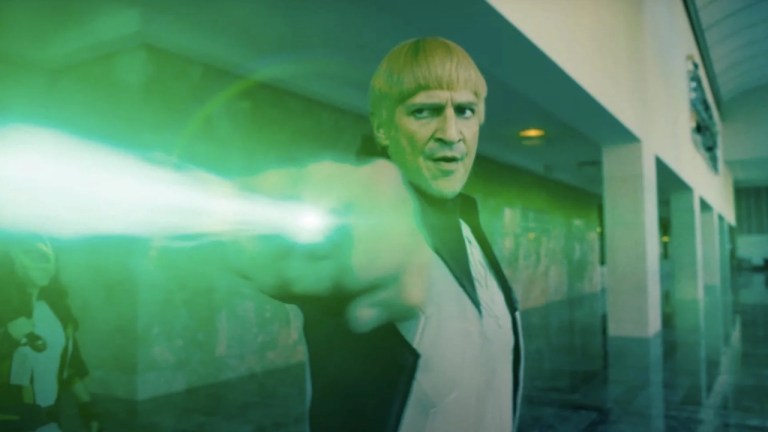James Gunn’s DC Universe Is Reportedly Righting Superhero Movies’ Greatest Wrong
Comic creators might finally be starting to get paid for the ideas that launch million-dollar movies.

Superhero stories are about people who use their powers to stand up for the weak, to stop exploitation, and seek justice. Yet, superhero movies have too often been made by exploiting creators, with powerful executives using their influence to avoid paying residuals to the talent that actually came up with the ideas that make the movies exciting.
According to one creator, that’s starting to change. Speaking to attendees at the most recent DragonCon (via Popverse), writer Steve Englehart revealed that he contacted DC Comics before the release of Superman, and laid things out for the publisher. “I said, ‘Look, I’m going to be telling this story about how you guys won’t pay us for Guy Gardner every time we’re asked about it. Do you really want that?’ Englehart recalled. “And they decided that they didn’t, so now all four of us get credit for it. John Broome, Gil Kane, Steve Englehart, and Joe Staton, as I understand it.”
Englehart doesn’t go into specifics, but that list of names alone is worth noting. In the past, creators were more likely to get a “Special Thanks” credit than actual payment for their work. Famously, Marvel would offer creators a $5,000 payment to some people involved with making the stories and characters adapted to film. Writer Ed Brubaker stated that he received more money from his small cameo in Captain America: The Winter Soldier than he did for any appearance of the Winter Soldier, whom he and Steve Epting created, based on Jack Kirby and Joe Simon’s character Bucky Barnes.
Guy Gardner was created by artist Gil Kane and writer John Broome in 1968’s Green Lantern #59, which introduced him as a relatively bland gym teacher who gets a power ring in an alternate timeline. A forgettable figure, Guy is basically a footnote until becoming a dull back up Green Lantern for a few issues in the late 1970s, a story that ends with him going into a coma. He stays in that state until Green Lantern #194 (1985), in which Englehart and artist Joe Staton reinvent him as the buffoonish braggart that Nathan Fillion portrayed on film.
In other words, DC is issuing royalties to not just the estates of the two men who initially created Gardner, but also to the two men who turned him into the popular character he is today.
For Englehart, who co-created superhero movie stars such as Shang-Chi and Star-Lord and penned the oft-adapted Batman story “The Laughing Fish” (Detective Comics #475, 1978), he’s finally being treated right. “We’re supposed to get royalties,” he declared. “The one question I’ve had since we talked about this is, do we get all the royalties, or do they take half of the royalties and say we’re going to keep that money because those guys are dead, so we don’t have to pay. I don’t know how it works.”
And yet, it’s rarely ever happened that way. DC has refused to give Englehart money for adaptations of his work. “‘No, nothing for Guy Gardner.’ ‘You didn’t create Guy Gardner, and we’re not giving you a dime'” was the response from the company, according to Englehart. “But theoretically, 40 years of bullshit has come to an end.”
Is it coming to an end for every one? Or just in this one case? While James Gunn put writer John Ostrander into The Suicide Squad, and even gave him a line as the scientist who puts bombs in victims’ necks, there are still a lot of other creators who had high-profile royalty payments. Is writer Marv Wolfman getting payments for creating Vigilante, a stand-out character in Peacemaker? Did artist Tom Mandrake, who worked with Ostrander to create the version of Mister Terrific who appeared in Superman, get paid for the use of his ideas?
We don’t have the answers to these questions yet. But Englehart’s comments make us hopeful that if the answer isn’t yet “Yes,” then it will be soon.
